
Ruben: "Fine tool: the Bulbmanager"
Handy IT system, but keep thinking for yourself soberly, says Ruben Evers
My job? Nice planning. And in lily farming, that's quite a responsibility. If you get it wrong, you're screwed. If I screw up, for example when storing the bulbs, everyone in the whole chain feels it. Fortunately, things usually go well and that's satisfying. My brother Thomas buys our bulbs for a whole year. The batches come from Holland, France, New Zealand and Chile. Once they arrive, I get to work with them. Where do we store the bulbs, which pieces of land are released, which orders are run?
Fine tool: the Bulbmanager
A super fine planning tool is the Bulbmanager; a computer program we have been working with for a year now. We follow our bulbs from purchase, stock in the cold store, planning in the greenhouse to harvest. And with the collected data we create a tight planting schedule. From the initial process to the harvest, everything can be traced in our system.
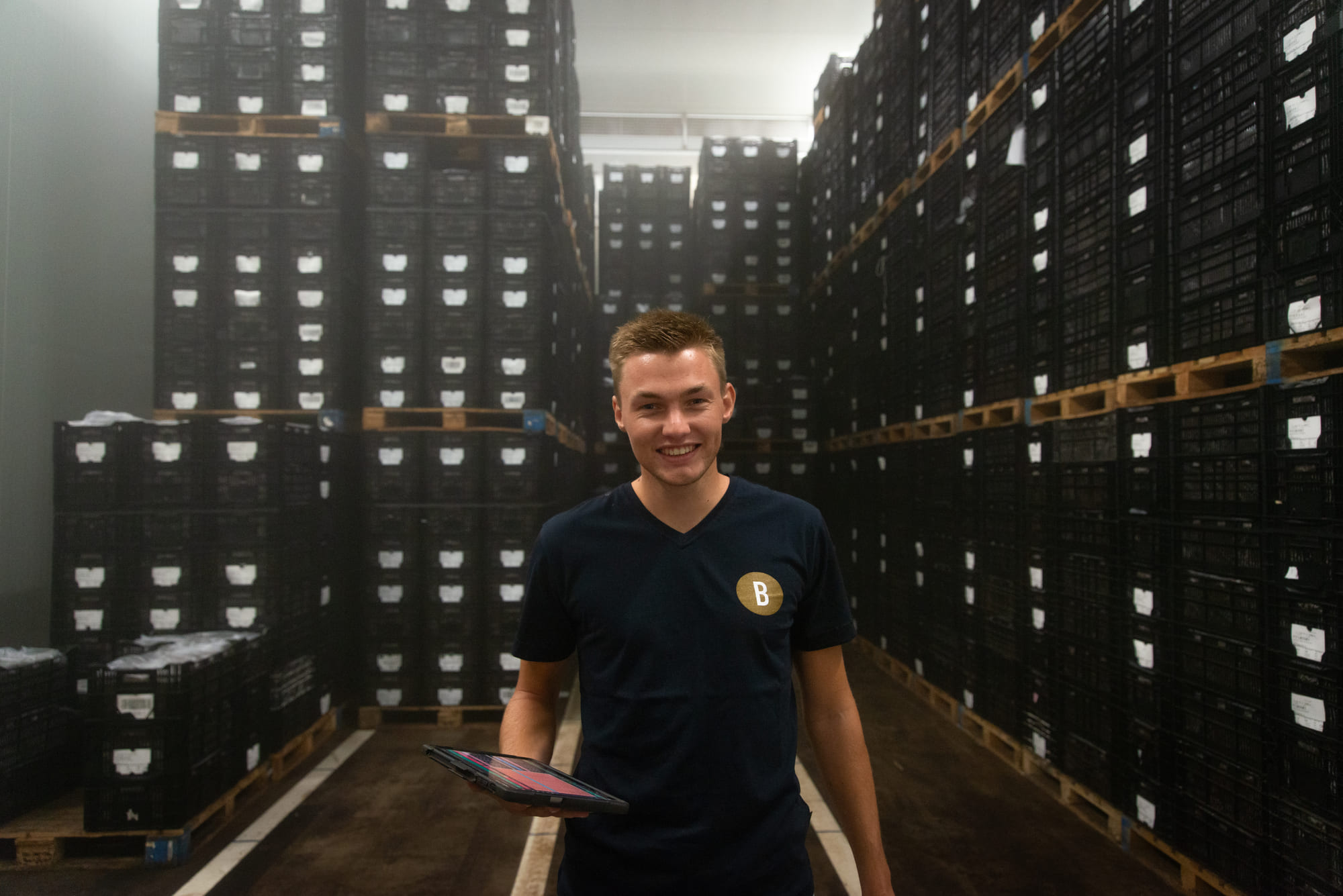
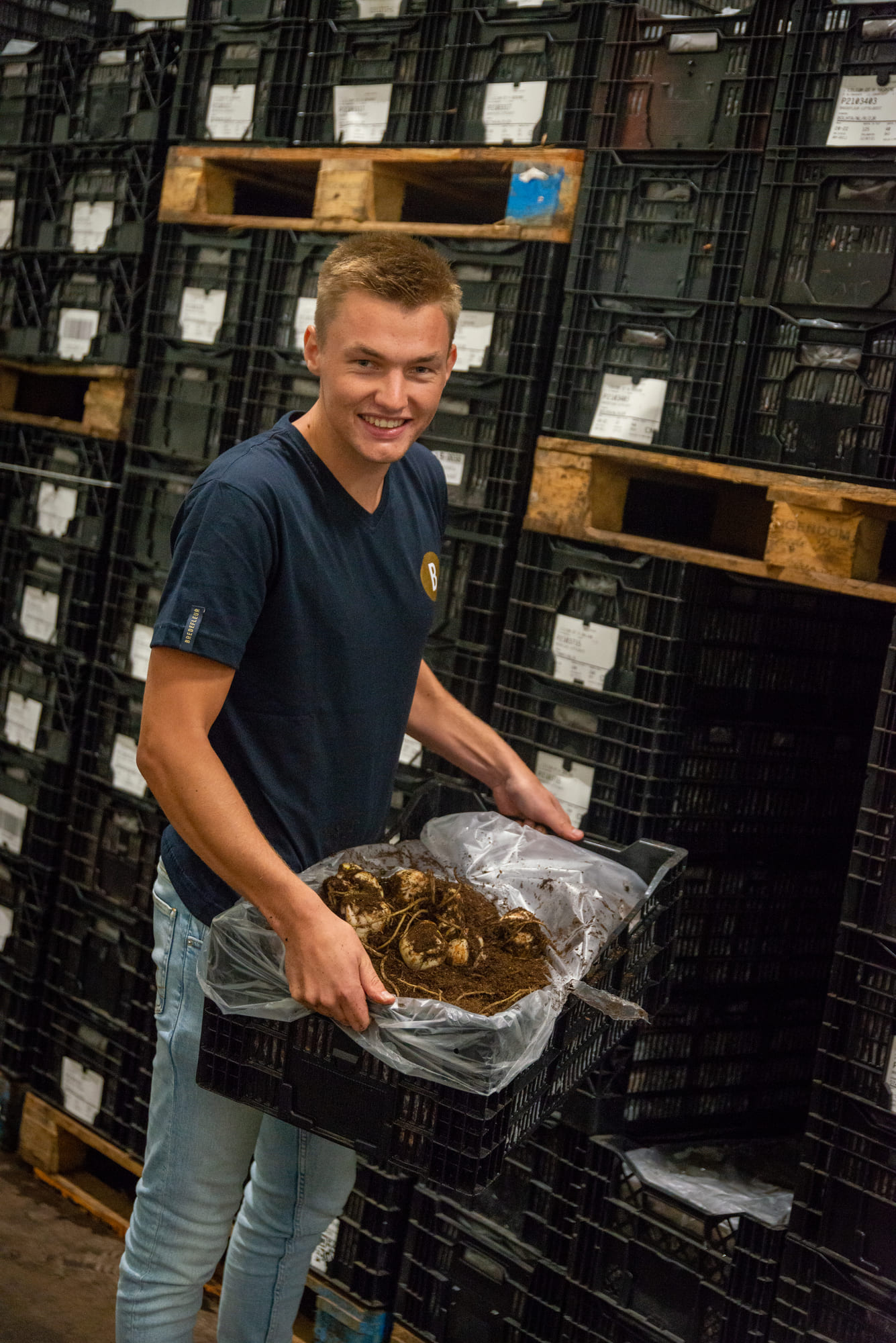
To measure is to know
Until a year ago, we worked with separate excel files. Analyzing was out of the question, you worked on gut feeling and knew approximately how and what to plan. With this automated system, you know much more precisely. For example, if a row in the greenhouse is not looking good, you check: what happened to those bulbs? Where were they in the cell, where did they come from? You can act on that.
Scan, scan and scan again
Before you can look back, though, all the bulbs have to be processed in the system: quite a process. With a tablet and a scanner, our employees get to work. Each bulb pallet is scanned in to the row in the cold store. Whatever is at the front of the cold store is planted first. So the bulbs have to be put away smartly. This is a real puzzle because some varieties need different temperatures. Also, there are spots in the cell that don't freeze as well. Every week I check the space in the greenhouse and which bulbs we need to defrost. Then they get a plant tag, which is scanned when they go into the ground. And at harvest you scan them again. That way you know the number of greenhouse days before they are cut.
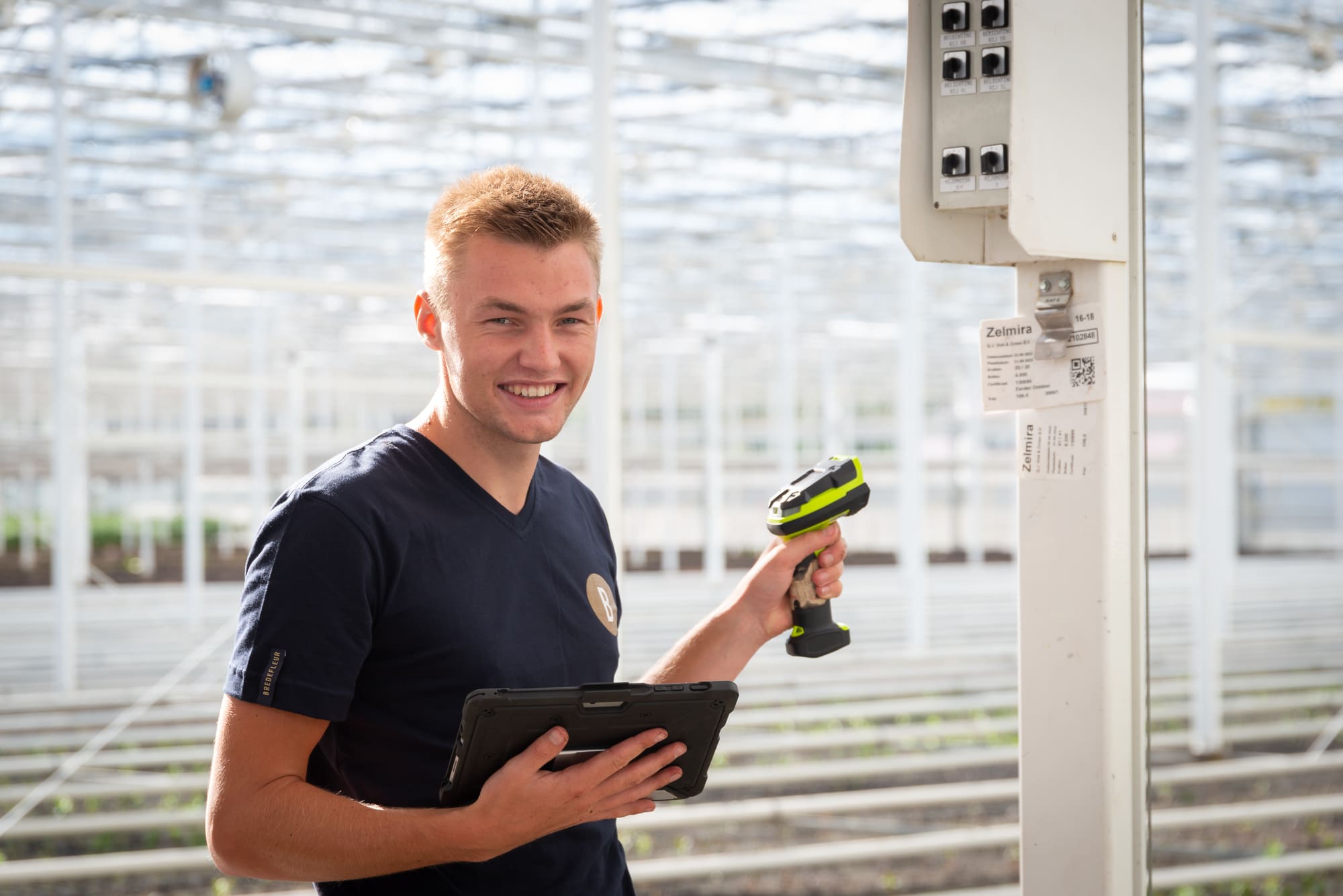
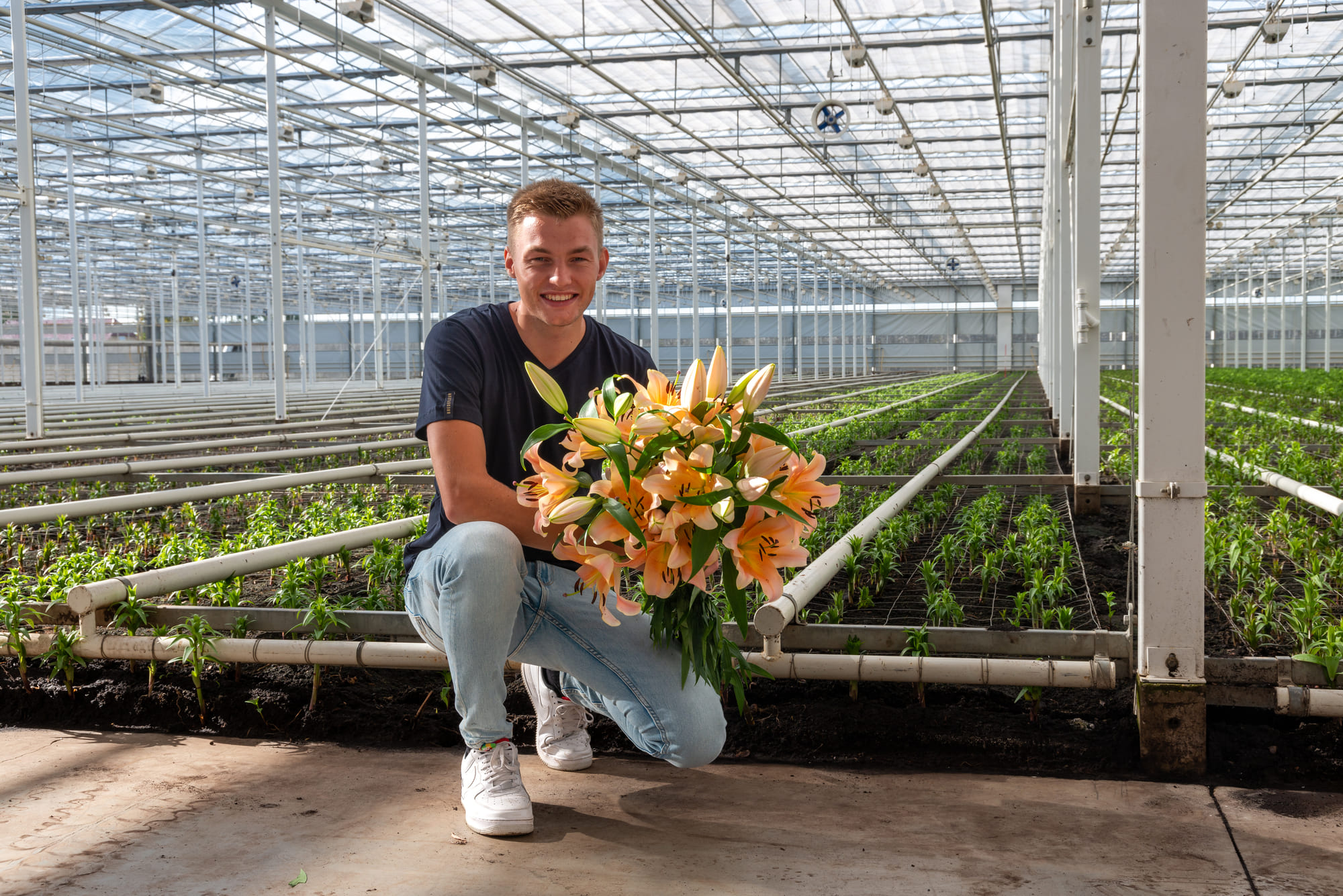
Plans for Christmas, Valentine's Day, International Women's Day, Mother's Day
Take the Christmas period, for example, when we sell a lot of red and white lilies. Production has to be on time and listens closely. In my system I see when the flowers are harvested and which planting week is attached. The planning of sales and production is also linked to it. You know that you need more hands in the greenhouse during harvest week. After Christmas comes Valentine's Day, with pink and red, International Women's Day and so on. A fun puzzle to create, especially if it works out the way you 'd imagined.

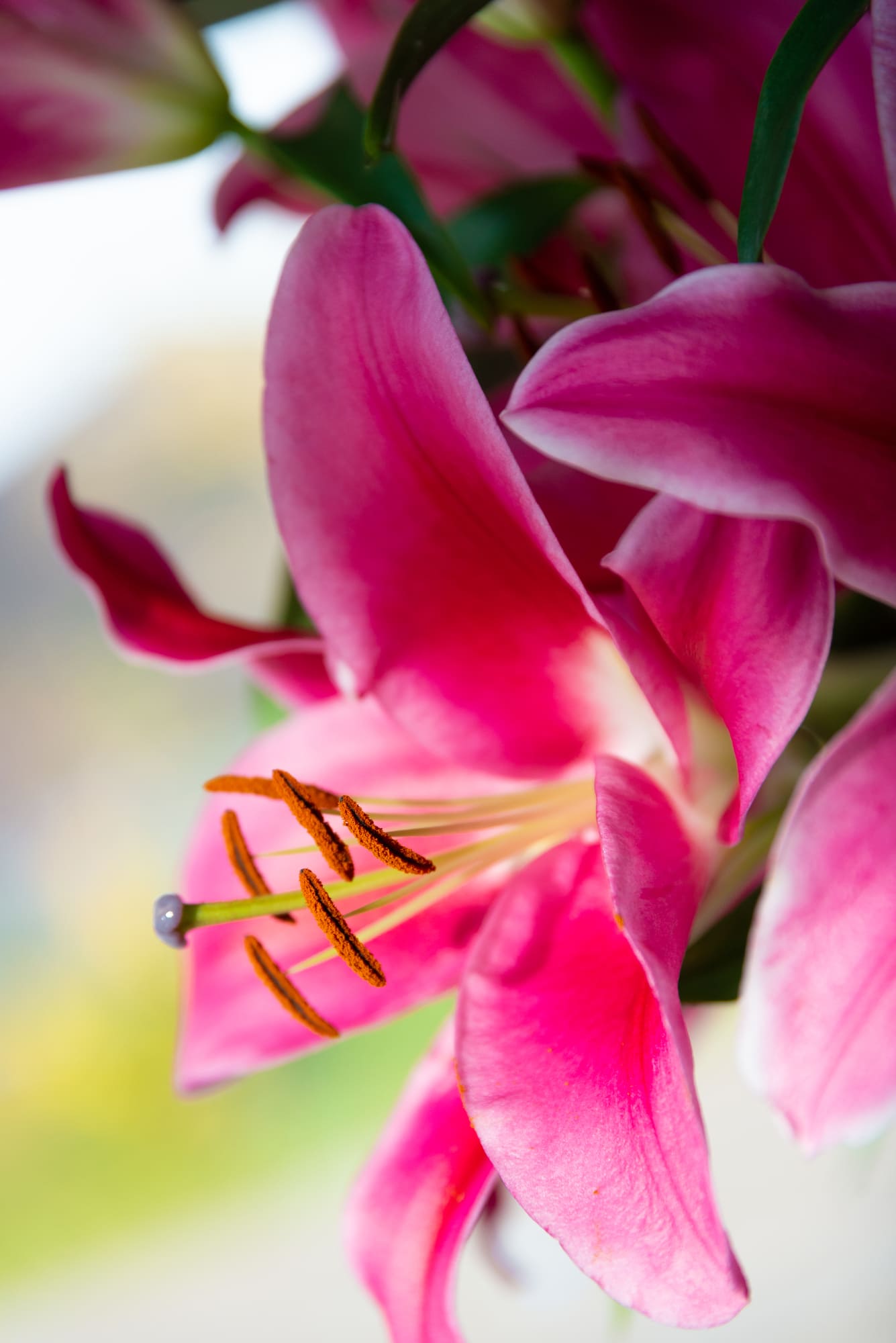
Staying sober in your own thinking
You have to learn to fathom an IT system like that. Ideally, you want to get everything out of your data; that's what we're looking for now. An ongoing learning process. Of course you have to keep thinking for yourself, not everything can be captured in a system. Lilies remain a natural product. That is why I walk around both locations every week to check the planning.

Completely spaced out for a moment
What's handy: testing new bulb varieties. You plant them away, scan them in immediately and later you check how fast the variety was. That's really super about such a system. We are also working on optimizing the process of defrosting. After 1 or 2 days out of the freezing cold, the bulb sprouts and then you have to pay attention. Last week the Chilean bulbs were defrosting, but they had sprouts that were much too large. Huge bummer, because then they are impossible to plant with the machine. And nobody wants to plant by hand. Then you're at a complete loss. Well, you can be difficult about it, but sometimes things turn out differently and then you have to change gear quickly. Fortunately, I don't panic easily.

Ruben Evers (22) is the youngest son in the family and has been working with the Bredefleur company for a year and a half.